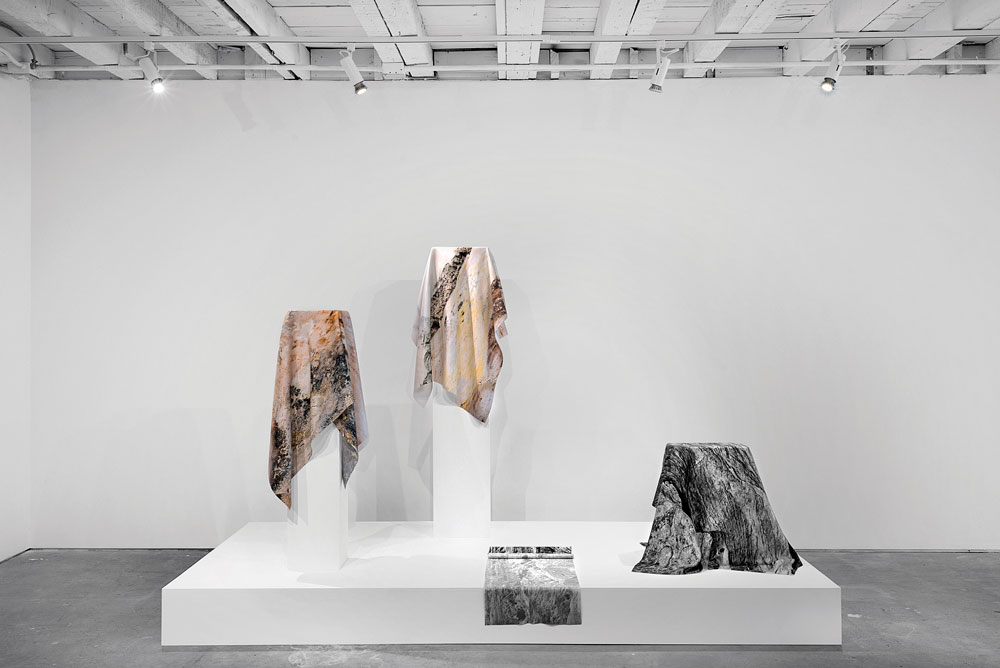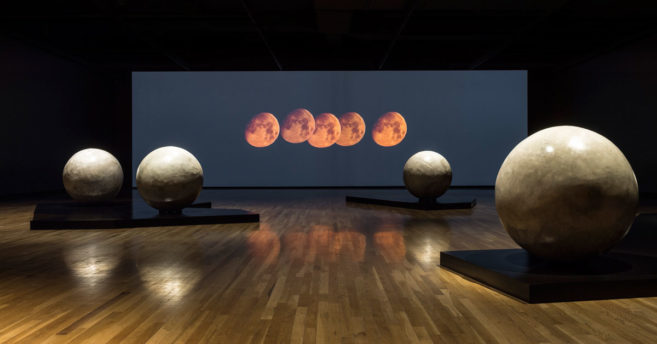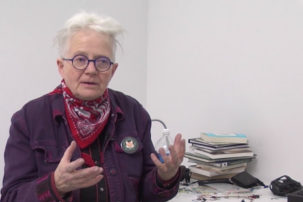“I think the art world, like every world, is really fucked up,” says award-winning New York–based writer Ben Lerner during our phone conversation. Ben Lerner is one of the few white male authors whose works I still respect and adore. He fits the soft spot I have for writers like Georges Perec or Tom McCarthy, whose playful yet rigorous attention to formal experiments within literature is invigorating to me as a thinker.
Lerner is part of many worlds and, in his way, deconstructs them all. He started as a poet, with his first collection, The Lichtenberg Figures, followed closely by a second, Angle of Yaw, which was written in Madrid while on a Fulbright Scholarship. In 2011, he published Leaving the Atocha Station, a brilliant, palimpsestic novel about a young, anxious sociopath navigating imposter syndrome while living in a foreign, European culture. In 2013 he received a Guggenheim Fellowship and in 2014 he published his second novel, 10:04.
Along with poetry and fiction, Lerner frequently writes about art, though he is not strictly an art critic. Instead he is one of few writers who, with curiosity, depth and an engrossing self-awareness, addresses the questions of art—what it means and what it does. It may at times feel intensely intellectual but, for me, the emotional undercurrents in his work mimic the ways in which we relate to each other in an age of mediated intimacy.
In anticipation of his Canadian Art Encounters talk on June 5, 2018 and his contribution to the Summer 2018 issue on translation, I called him up to ask about his craft, his observations on art, and the peculiarities of the art world.
Yaniya Lee: I really enjoyed your short story “The Polish Rider,” about a young painter who loses her paintings right before an art show. As someone who writes poetry and fiction, can you talk about art writing?
Ben Lerner: I have written more straightforward art criticism, but usually in a way that’s ended up being the step in the direction of something that I fictionalize instead of the traditional mode of art criticism functioning as a caption for the images. When there’s work I admire, I’m usually trying to push off it in a way that produces something that isn’t just professional criticism. Both because I’m a total dilettante—I’m not a scholar—but also because I think it’s more interesting to let the energy of the artwork inspire new work as opposed to discipline it through conventional criticism.
I have written exhibition texts; they tend to be unconventional. [With regard to “The Polish Rider”] I have a friend named Anna Ostoya, who’s a Polish painter, and I wrote a catalogue essay for her and then she did in fact lose a couple of paintings in an Uber. This story occurred to me that was about both the East and West, to a certain degree, but also about the weird interaction of the system of circulation that’s Uber and the system of circulation that’s a gallery, and the paintings that I made up in the fiction are made up but they’re based in a certain way on Anna’s actual work.
Anna Ostoya then made the paintings I describe [in the story]. We have this ongoing collaboration that’s going to be a book. It’s kind of about the exchange between the verbal and the visual as it moves across boundaries of fact and fiction. I’m trying to imagine it as a conversation across media as opposed to either text as captioning the visual work, or the visual work merely illustrating the text.
The art world likes to think of itself as very “other” to the excess of the Trump-ish gilded age, but of course it’s totally part of it.
For me, the flickering materiality of language—the way that it is sometimes very thingly and at other times seems immaterial and gossamer—is a useful way to think. It’s not about which position is true for me, it’s about what’s an enabling fiction at a particular moment. And I think the ambiguity of language, the shifting value of its thingliness versus its disappearance into an act of communication, is really fascinating. And of course that’s not only true of language: what’s great about a lot of painters is the way they can make paint felt as paint and then make it disappear into an image.
One of the great things about writing about, or around, the arts is that you get to stage a drama between the different kinds of materials in play. You get to make part of the drama of the work the difference between canvas and paper, but there is also the difference in the way we carry the afterimage of a painting or the memory of a poem. And the different ways that materials age: How does language age versus the way a painting ages? What does a terrible storm do to actual artifacts in a museum, and what does it do, in the cultural sense, to a certain kind of linguistic artifact—how does a poem change after this or that historical event? It’s not that I have any stable position about these questions, it’s just that I think that the question of the materiality of language is itself interesting material for art.
YL: Visual artists I’ve interviewed often have a deep relationship with their materials, like cement or wood, or clay. What you’re describing is being inspired by visual art and then taking it as a starting point to craft something—as a writer, it seems to me that your material is language.Could you speak to that? Would you agree?
BL: I have two contradictory feelings about language as material that probably relate to the weird way I accidentally became a novelist. I grew up as a poet and among my company the emphasis was really on the materiality of language, and, if you think about the Language poets, there’s a whole field of poetics organized around the idea that you need to emphasize the materiality of language over the idea that it is a transparent medium of meaning. So a lot of techniques of disjunction and collage are motivated or justified by this notion of emphasizing the materiality of language, because so much of culture forgets that language is material. It tries to pretend that language can unproblematically describe the world.
This avant-garde emphasis on materiality was really crucial to me, but I was also always jealous of people who actually worked with cement or paint or whatever, and got dirty in a studio. Even though I spoke about the materiality of language all the time, I always felt language was not as thingly as these other materials and their discourses of facture. When I started writing prose I became interested in the comparative immateriality of language, and instead of being jealous about which medium was more material, I started to become interested in the way that the virtuality of language—the fact that it is less concrete—can actually be a great advantage. With language, you can describe artworks that can’t actually be made with materials in the phenomenal world. This also links up with the traditional Shakespearean “preservation fantasy,” the idea that language is more durable than other kinds of material because it doesn’t rust, because it’s easier to reproduce, because you can memorize it.
For me, a powerful aesthetic experience unfixes the feeling of giveness: the feeling that there’s only one way to live, or only one way to go about your day.
YL: Ekphrasis is a translation of the visual into words, where a writer will take art as a starting point from which to expand. Ekphrasis is sometimes viewed pejoratively, but in your writing you pull it off in a really engaging way. Could you talk about that mode of writing?
BL: One of the really interesting things about ekphrastic literature, or writing about art, is that even when it claims to be translation or description—which is what the word ekphrasis means etymologically— it’s almost always more complicated. I’ve always been really fascinated with the description of the shield of Achilles in [Homer’s] Iliad—the canonical example of ekphrasis in the West—where there is an endless description of the shield; it just carries this totally impossible quantity of detail. It claims to be language praising this incredible material artefact, but it is so much more detail that any real shield could have. It actually becomes about celebrating the power of language to describe this imaginary landscape that would be impossible to make in metal.
YL: That reminds me of that Borges story [“On Exactitude in Science”] about the map that has so much detail it overtakes the world that it’s meant to describe.
BL: Exactly. It’s like literature can make a map that exceeds the possibility of any actual territory. Oftentimes ekphrastic representation actually becomes about celebrating the medium of representation over and against the original medium.
One way to read the history of writing about art is as rivalry, and that’s in “The Polish Rider” in a lot of ways. On the one hand he’s helping his friend search for paintings and he has this great idea that they can make the story of the search take the place of the paintings, and on the other hand he has this fantasy of the writing replacing the visual art. That’s also traditionally a really complicated gendered fantasy: the man gives a voice to the silent work of art, and the silence and the beauty codes as feminine.
There’s this great essay by Barbara Johnson called “Muteness Envy.” It talks about Keats and “Ode on a Grecian Urn,” and this persistent fantasy where the speaker of the poem [praises the object’s beauty], but it’s all about speaking for people who can’t speak. Barbara Johnson talks about the way that this history is caught up in a kind of fantasy of rape: the unravished bride of quietness.
I think one of the really fascinating things about ekphrastic writing is not just that it can’t accurately translate; it’s that it becomes this scene that’s full of different kinds of fantasy and rivalry. It always becomes, at least in part, about the medium of representation: what can language do relative to the visual?
YL: Your novel Leaving the Atocha Station was really funny. It captured this anxiety or this posturing that I see as the phoniness that happens in the art world all the time. Yet because you were playing with fiction and reality within the text, it felt to me like you were asking the question: does this mean anything or does this mean nothing at all? And you just couldn’t tell between the two. How do you negotiate those kinds of social circles in real life—do you see them as kind of phony or is there a pleasure in those interactions?
BL: I think the art world, like every world, is really fucked up. And there are ways in which the mainstream art world is particularly fucked up. For all kinds of reasons. The kind of fuckedupedness of the art world that actually interests me, not interpersonally but conceptually, is the contradiction between the language of value that is money, and the other languages of value that art is supposedly meant to contain: spiritual, cultural, intellectual…
If one’s going to make a generalization about art of any sort, it’s always a way of imagining new forms of value that largely—precisely— aren’t priced, which is the culture’s dominant mode of imagining value. The art world is where there’s the most obscene contradiction between people speaking out of one side of their mouths a language that’s supposed to be totally not about money when in fact we know that a lot of these gallery systems are banks—they’re places for the rich to park surplus capital and to reduce art, which often thinks of itself as critical or whatever, to decoration. Or worse, they just put it in a basement and see if it appreciates.
The art world likes to think of itself as very “other” to the excess of the Trump-ish gilded age, but of course it’s totally part of it. And that’s not just the art world; it’s not like I think literature is pure, although I do think there are modes—literary communities or other kinds of art worlds—that aren’t so full of that contradiction.
When I’ve written about art, like when I write about art vandalism or art conservation, I’m interested precisely where questions of value come up in the contradictions of art and capital in something like an art world.
So vandalism really interests me. The reason why I wrote about art vandalism was because it’s a moment of confrontation between the art world’s celebration, on the one hand, of this kind of Duchampian legacy where anything is art, and on the other hand, the fact that really what they need is anything that can sell. These [Duchampian] acts of vandalism, you can do that in the art world if you’re a famous enough artist that the gesture can be commodified and increase the dollar value of the work. You can’t do that if it’s going to decrease the value of the work. Vandalism is a moment that reveals this totally open secret which is that the art world doesn’t care about Duchampian conceptual play—it cares about commodity.
I’m interested in the contradictions of the art world. But then there are also a lot of great people who are trying to do their work despite all this.
YL: Art has to have some meaning outside of value: there has to be a way art has an effect that can be understood outside of exchange value.
BL: [Mine] is a very traditional position in a lot of ways: I think important art does hold out the possibility of this other kind of value, even if it can’t necessarily realize it in the world. It has that glimmer of possibility. Not all art does, but a lot does for me. And I believe that that can be true of work you see in a gallery or in a museum that’s sponsored by tobacco money. It’s important to understand that there’s no work that’s totally independent of the commodity culture, but that art objects are not exhausted by their commodity status.
YL: What would be an art object that’s doing something other than holding value? Have you been affected by art? You write about this as well.
BL: Artworks can do all kinds of different things. They can disclose kinds of thought and feeling that are increasingly foreclosed in other parts of the culture; they can give pleasure without pleasure always having to be reduced to a form of criticality. I don’t necessarily think I can defend it but I do believe an aesthetic opens up possibilities and intensities that make you feel alive and that remind you of capacities to remake the world, even if it’s not clear what the available strategy of remaking is. For me, a powerful aesthetic experience unfixes the feeling of giveness: the feeling that there’s only one way to live, or only one way to go about your day.
Ben Lerner spoke at Innis Town Hall in Toronto on June 5, 2018 as part of the Canadian Art Encounters series.

 Karen Zalamea, Weathering, 2017-18. Ink-jet prints on paper and laser-cut silk. Dimensions variable.
Karen Zalamea, Weathering, 2017-18. Ink-jet prints on paper and laser-cut silk. Dimensions variable.







